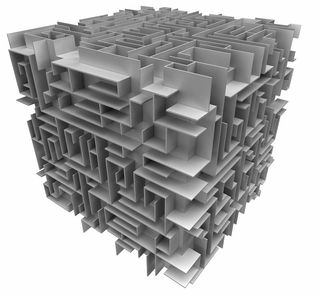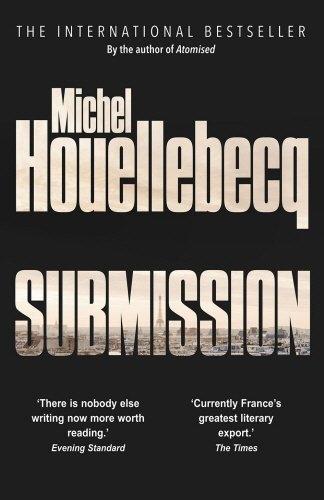 Here. Price currently nuked to 0.99 until the 24th.
Here. Price currently nuked to 0.99 until the 24th.
Review copies could potentially be available for even less. Contact me if you’re interested.
Executive Summary
A disaster befalls the United States. It must never be repeated. And so, tomorrow’s light shines in a thousand million million eyes.
Invisible nanobot-based cameras now blanket the cities and the skies, recording data and transmitting it to the Pentagon. Every single event: recorded. Every single incident: captured. It’s the ultimate law enforcement tool, a security feed that spans coast to coast.
But something is going wrong.
The nanocams are transmitting bizarre scenes to the Pentagon – events that have never happened, images that seem to be from another world.
Are the recordings being doctored?
Or is something far more sinister afoot?
A powerful and malevolent intelligence is emerging from the ruins of America, and it might be too late to stop it. An intelligence analyst called Viktor Kertesz now stands at the threshold of a new chapter of human history…and zero has just become one.
…In More Detail
Vanadium Dark is a strange, ultra-violent science fiction/thriller/horror novel set in the near future. I wrote it as a Venn diagram intersection of two ideas.
Idea Uno: global surveillance, and the reality that most oppression to date has been done with crude, ineffective, and limited methods.
Nero did not have chartered jets, and blacked-out vans to help him apprehend Christians. Torquemada did not have electric fires to burn his victims. Hitler did not have genome testing that could immediately determine, through a tiny drop of blood or sliver of skin, whether someone was a Jew.
They killed millions. And they were amateurs.
We’ve already seen the NES and SNES of oppression. The Oculus Rift of oppression could be coming soon. What form will it take?
18th century philosopher Jeremy Bentham predicted a new sort of prison, called a panopticon. A huge array of cells, arranged so that a single guard (via reflective lenses) can watch them all from a single control tower without the prisoners knowing that they’re being watched. The beauty of it is that even though huge numbers of prisoners are going unwatched (the guard only has two eyes in his head) they all must behave as if they’re being watched, as they cannot know whether the guard is looking into their cell at the moment.
The United States of Vanadium Dark is, essentially, a panopticon. The air is no longer just oxygen, helium, and nitrogen molecules – now it’s infested with nanoscopic cameras, connected to an immense security apparatus in the Pentagon. You are being watched. Your every move is now a performance. An anti-terrorism weapon, apparently. Sponsored by a relatively benign government.
Unfortunately, it works perfectly and the public loves it.
Idea Dos (MS-DOS?): computer intelligence.
Lots of people have written about the singularity – the point at which machine intelligence outstrips human intelligence. But the singularity is, by definition, something that cannot be written about, because it’s the point at which computer intelligence takes over, and you’re like a monkey writing about early human culture, or early humans writing about civilisation, or medieval peasants writing about the industrial revolution, or even people from 1850 writing about now. Nobody is very good at predicting the next rung on the ladder. We can only look down, not up.
Stories about the future, like stories about the past, are always distorted by the funhouse mirror of the present. In Caravaggio’s The Taking of Christ he has Roman centurions wearing medieval plate armor. In Shakespeare’s Julius Caesar, one of the characters makes note of a ticking clock. Likewise superintelligent computers in fiction always come off like high-tech versions of Clippy: kind of rote and overpredictable, or like Data from Star Trek, adding lots of zeros to figures, and having trouble understanding human emotions.
I wanted to make a superintelligent AI that’s just an unfettered force of chaos: completely out of control and unpredictable. Not much more than a cyclone that can talk.
My ideas are probably wrong. But I hope they reach the level of convincing lies.
My Brain Wants to Do Pattern Matching. What Can I Compare It To?
Please provide the individual serial number on your brain, so we can provide better feedback. Maybe JG Ballard, or HP Lovecraft. Maybe Michael Crichton, or Dean Koontz. Maybe Greg Egan, or Eliezer Yudkowsky. Maybe Paddington Bear. Two different people who read Vanadium Dark are reading two different books.
Who Wrote It?
Ben Sheffield, from Australia. There are a few Ben Sheffields from Australia, but we’re all the same. I have found that the best way to understand the world is to experience it from a few different bodies.
(Re)commendations obtained with racks, thumbscrews, comfy chairs, et cetera
“This is definitely a different and terrifying story that got under my skin and stuck with me.” – Kristen Gough
“The author keeps the story alive and moving along with believable characters and an interesting story-line.” – SarahC
“Ben Sheffield gives us a terrifying, nail biting story. This is one book I will never forget in a hurry!” – Chrissy
No Comments »
 I am confused about some things. If you know the answers to these, please don’t hesitate to not email me.
I am confused about some things. If you know the answers to these, please don’t hesitate to not email me.
– The audience in the Producers paid to see a movie called “Springtime for Hitler”…so why are they shocked that it has Nazis in it?
– Why do we say “a ton of something” to indicate a large number? Doesn’t that depend on what you’re talking about? A ton of horses is only two or three horses. A ton of pianos is…one piano. A ton of blue whales would be part of a whale flipper or something.
– Why is QWERTY a universally recognised series of letters, and so is ASDF (to an extent)…but nobody ever talks about ZXCV?
– Why do we still have a cliche of rappers wearing furs, diamond grills, and gold chains?
This hasn’t been true for a decade. Most rappers today (Kanye, Drake, Jay Z) dress in a pretty understated and subdued way – t-shirts, hoodies, wifebeaters, suits if they’re going to an awards show. It’s like if women evolve the ability to excrete through a throat sac and we all still joked about them leaving the toilet seat down.
– Everyone makes fun of Han Solo’s “12 parsec” goof in A New Hope, but isn’t it a powerful argument for the Millenium Falcon’s abilities that a scientific illiterate can fly it?
– Why can ghosts walk right through walls but not fall through floors?
– If a superhero is a powerful hero, why don’t we call a heroic disabled people “subheroes”?
– When Howard Stern described himself as “the king of all media”, did he do this in knowledge that, like monarchy, talk radio would eventually become obsolete? A forward thinking businessman would have called himself the prime minister or president of all media.
– Why are the hundreds of Nigerian princes in my inbox not causing massive hyperinflation? And why do they advertise “free money”, when they know full well that their millions of dollars will introduce nothing but stress and unneeded complexity to my life?
No Comments »
 “So this is how liberty dies,” says Deanna Troy, a character in Rod Serling’s famed sci-fi series Babylon 5. “With thunderous applause.” Submission is set in near-future France, where an Islamic party of Wahhabist mien has ascended to power. Various European features like women’s rights are being clawed back, and the country is beginning to de-Westernise.
“So this is how liberty dies,” says Deanna Troy, a character in Rod Serling’s famed sci-fi series Babylon 5. “With thunderous applause.” Submission is set in near-future France, where an Islamic party of Wahhabist mien has ascended to power. Various European features like women’s rights are being clawed back, and the country is beginning to de-Westernise.
The book is called “Submission”, not “Rebellion”. Expected notes of defiance or insurrection aren’t found here. Nobody hides a dagger inside a niqab or hijab. The heart of the matter is this: Michel Houellebecq doesn’t think Western culture is worth saving. His take on an Islamist takeover of France is something like “good, you deserve it.”
The main character is incidental: a middle-aged literature professor who lays pipe in various female students (apparently Houellebecq wasn’t very successful with the fairer sex when he was young. He’s certainly making up for lost time in the pages of his books). Blearily, as if through a panopticon, we see the political stormclouds rattling France. In order to obstruct a right-wing takeover, France’s Socialist party is allying with the Muslim Brotherhood, turning them from a wedge party to an actual force. Soon, Francois sees the future: Islamist Mohammed Ben-Abbes will be president of France.
Scenes of Francois’s daily life are deliberately flat and empty, like slashed tyres. Things like microwaving dinner end up being little manifestos of ennui. Houellebecq hits you hard with pointlessness of it all, and although he almost superglues his tongue inside his cheek (one of the places Francois stays is the site of the Battle of Tours in 732 ad), it’s hard to call this book satire, unless it’s satire with an incredibly broad target: like western civilization or perhaps sentient life as we know it.
The book came out on the 7th of January. On the same day, two Al-Qaeda shooters blessed and culturally enriched eleven magazine publishers in France. For all Houellebecq’s contempt for Islam (“the stupidest religion”, as he says), it’s never dealt with him as it has with Charlie Hebdo, or even Salman Rushdie. Indeed, it’s mostly his fellow westerners that have caused him problems, charging him with hate crimes and forcing him into exile and all the rest of that business.
On one hand, Islam occupies a central role in Submission. On the other hand, it’s hardly in the book at all. French decadence is Houellebecq’s real target. Islam, as he sees it, is just a memetic predator in a world full of memetic predators – it’s the responsibility of guards to stay at their posts and keep the predators out. And France has found her guards asleep at their posts.
After Charlie Hebdo, I assume people rushed out to buy Submission, expecting solidarity and French pride and saber-rattling, and were a little surprised by what they got.
It’s not that Houellebecq’s writing is dark. Lots of writers are dark. The thing is that you never know where you stand with Houellebecq, or are sure of what he’s truly saying. I don’t mean that in an obscurantist postmodern sense. I mean it in the sense of Hitler’s quote “You will never learn what I am thinking. And those who boast most loudly that they know my thought, to such people I lie even more.” Houellebecq’s work is full of crypto-Marxist and crypto-reactionary asides and allusions, like squid ink to conceal his true views. What, finally, is Houellebecq’s stance? That France needs to recover its spine? That’s too easy.
His mind is a black box, and so is this book.. In the end, the only thing I can draw from the soil of Submission is that France can probably no longer with saved. He’s a bit like Martin Amis, who was born in the UK but has permanently relocated to the US. Sometimes you can take the jungle out of the boy.
No Comments »
 Here. Price currently nuked to 0.99 until the 24th.
Here. Price currently nuked to 0.99 until the 24th.

